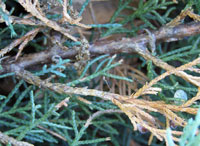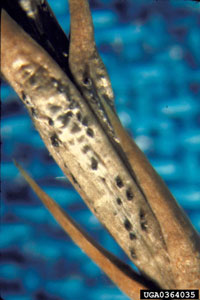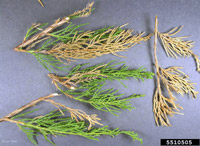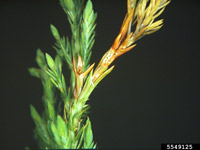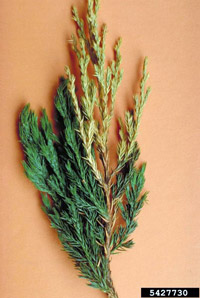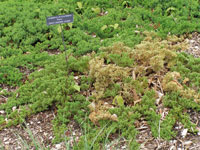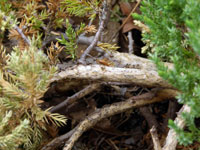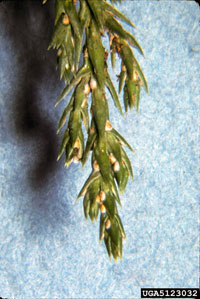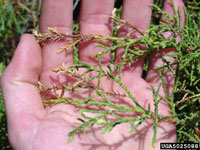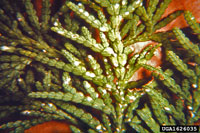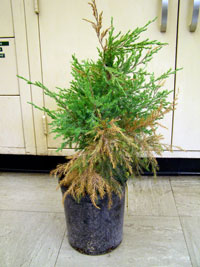Extension > Garden > Diagnose a problem > What's wrong with my plant? > Evergreen Trees and Shrubs > Juniper > Needles turn brown from branch tip
Juniper > Needles > Needles turn brown from the branch tip down
1 of 6
Phomopsis blight
Phomopsis juniperivora
- Branch ends (4-6 inches) turn reddish brown than gray
- Numerous brown branch tips throughout canopy of larger trees
- Browning of shoots starts in late spring to early summer, but brown branch tips remain in tree all summer long
- A gray band with tiny black dots (fungal spore producing structures) forms a division between healthy and dead tissue
- More information on Phomopsis blight
2 of 6
Kabatina tip blight
Kabatina juniperi
- Branch ends (2-6 inches) turn brown than gray
- Browning of branch ends first visible in February to March
- Infected branch ends drops from tree by early summer
- Gray to silver cankers dotted with small, black spots visible at the base of the discolored needles
- More information on Kabatina tip blight
3 of 6
Salt damage
- Needles turn brown from needle tip down
- Branches and needles facing road are most severely affected
- Protection of branches and needles provided by snow cover so damage in these areas is not as severe
- More information on Salt damage
4 of 6
Rodent damage
- Bark is completely chewed from branches and stems
- Majority of damage occurs in winter and early spring on braches or stems not protected by snow
- Foliage turns yellow to brown on branches the bark was removed
5 of 6
Juniper scale
Carulaspis juniper
- White, spot-like, approximately 1/10 inch diameter cover needles
- Dull green coloring of foliage is first sign of infestation
- In high infestations entire plant may look sprinkled with snow
- Foliage may turn yellow from insects sucking sap from needles, then brown and die as damage ages
- New growth fails to develop normally on infested branches
- More information on Juniper scale
6 of 6
Root rot
Fusarium sp., Rhizoctonia solani, Phytophthora
cinnamomi
- Needles turn brown from the tips of the branches down
- Roots are dark colored, soft and mushy
- Occurs only on Junipers in heavy waterlogged soils
- More information on Root rot




